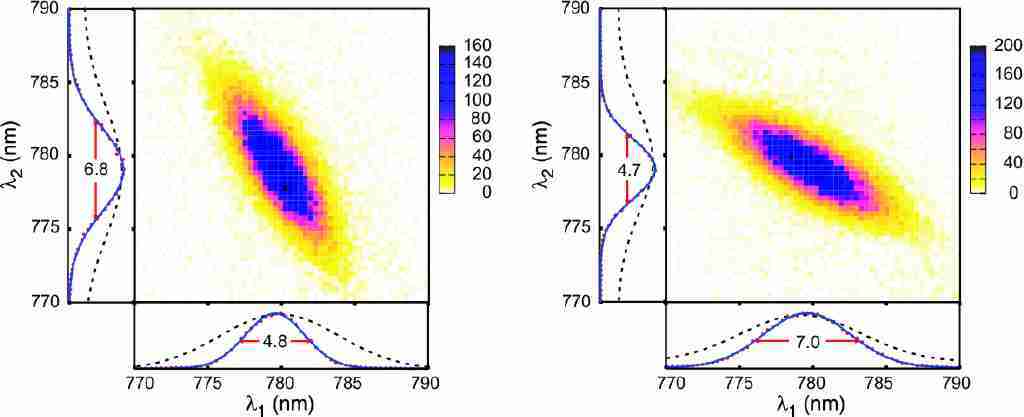Multiphoton state preparation
Parametric down conversion (PDC) can be used to generate not only pairs of photons but also multiphoton entanglement where 4 photons (or 6, 8, etc) are produced. For this to succeed with a reasonable probability, the instantaneous power of the pump laser needs to be increased by orders of magnitude compared with the cw case. By using a Ti:Sapphire mode locked laser producing pulses of 150fs, a factor of about 1000 in pump power is gained. This results in a factor of 1000000 increased probability of a 4-photon event.
Spectral distinguishability and entanglement quality
A problem associated with PDC in a pulsed regime is that the broad spectrum of the pump results in a broader range of possible wavelengths of the down-converted photons. As consequence, the quality of the polarization entanglement produced with pulsed pumps is comparatively low and typically requires additional filtering of the down-converted light, severely reducing the available signal.
With the aim to optimize our source towards multiphoton production, we performed an experiment to understand the degradation of polarization entanglement from spectral distinguishability.

Two single photon spectrometers and a set of polarizers map the
correlations between the down-converted photons in the polarization and
spectral domain.

It is easy to see qualitatively that the HV and VH spectra are not identical and thus that there is information about the polarization state contained in the spectral properties. A quantitative analysis shows that the spectral information accounts for all the entanglement degradation.
References
A more complete description is found in here.

